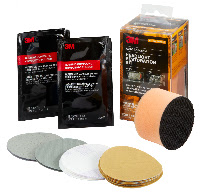If you have an electrical component in your vehicle that isn’t
working, there’s a way that you can check it yourself before you pay a
technician to do a diagnostic. There are many things in your vehicle that are
electric, radio, lights, wipers and wiper motor, power windows, power door
locks, even your fuel pump. I’m sure you can think of more, but this is just an
example of what needs electrical power to work.
So that brings us to the device that protects these circuits
and ultimately the component. These protectors are your fuses, for the most
part. If you have an electrical component that isn’t working, the first thing
you want to is find the fuse and check to see if it’s burned out.
Typically, there are 2 fuse boxes in your vehicle. One is
located under the hood and the other is usually somewhere under the dash on the
driver’s side. Look in your owner’s manual for the exact location. Next, you
need to find out where the fuse is in the fuse box for your component.
Sometimes you get lucky and the inside of the fuse box cover
tells you what each fuse is, otherwise you need your owner’s manual to find this
information. Once you locate the fuse, you need to pull it out and check it.
Most fuse boxes supply a fuse puller, attached somewhere in the box or the
cover. This helps you to grab the fuse to remove it.
Once you remove the fuse, you want to look to see if it’s
been blown. Blade fuses will have two flat metal blades connected in the middle
by another piece of metal. If a fuse is bad, the piece between the two blades
will be disconnected, or broken.
There are many reasons that this could happen. A power surge
or a wiring problem are a couple examples. You’ll need to replace the fuse if
it is blown. You want to make sure that you always replace it with the
recommended amperage, this is the number on the top of the fuse. If you don’t
have an extra fuse, you can buy them at any automotive store. Fuses are all the
same, meaning that the color code doesn't change. 10’s are red, 15’s are blue,
20’s are yellow etc. You do want to know if you have a regular blade fuse or a
mini blade fuse. It helps if you take the fuse with you so you only have to
make one trip.
Once you replace the fuse, the component should work. If the
fuse blows again, you will need to have a technician diagnose the problem. The
great thing is if the fuse was all you needed, you just saved yourself the cost
of paying a shop to diagnose the problem. Fuses today are only about 25¢ where
a half hour of diagnostics might cost you $35. Don’t be afraid to get in there
and look for yourself. Anything it shows you how to do in your owner’s manual
is most likely something you can do on your own.










